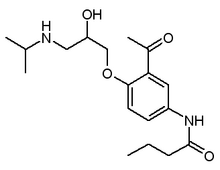Beta blockers are widely used in the management of cardiac conditions and thyrotoxicosis, and to reduce perioperative complications. Asthma and chronic obstructive pulmonary disease (COPD) have been classic contraindications to the use of beta blockers because of their potential for causing bronchospasm. The identification of cardioselective beta blockers that have significantly greater affinity for [beta.sup.1] receptors than for [beta.sub.2] receptors offers a subgroup of beta blockers that are less likely to cause bronchospasm. Salpeter and associates analyzed data from randomized, blinded, placebo-controlled trials to evaluate the effect of cardioselective beta blockers on patients with reactive airway disease, including asthma or COPD with a reversible component. Eligible studies could use oral or intravenous dosing given as a single dose or as continuous treatment. Of the 29 studies included in this meta-analysis, 19 studied single-dose treatment in a total of 240 patients. The cardioselective beta blockers without intrinsic sympathomimetic activity that were used in the study included atenolol, metoprolol, bisoprolol, and practolol. Those with intrinsic sympathomimetic activity included celiprolol, acebutolol, and xamoterol. In the group that received a single dose of a beta blocker, there was a 7.46 percent reduction in forced expiratory volume in one second ([FEV.sub.1]), which reversed after administration of a beta agonist. None of the studies demonstrated increased respiratory symptoms among patients. In the 10 studies involving 141 participants who received continuous cardioselective beta-blocker treatment, no participant had a significant drop in [FEV.sub.1] or developed new symptoms.
The authors conclude that cardioselective beta blockers can be used safely in patients with reactive airway disease. The first dose of a cardioselective beta blocker may cause a small drop in FEV1, but continuous therapy over a few days to weeks, especially with agents without intrinsic sympathomimetic activity, was not associated with significant [FEV.sub.1] changes, symptoms, or beta-agonist inhaler use.
In the same journal, Epstein agrees that cardioselective beta blockers are safe in patients with mild to moderate reactive airway disease. These medications clearly can decrease mortality among patients with acute coronary syndromes, congestive heart failure, select arrhythmias, and hypertension. Drugs should be started at a low dosage and titrated upward. Care is necessary in patients with severe asthma or ongoing bronchospasms.
COPYRIGHT 2003 American Academy of Family Physicians
COPYRIGHT 2003 Gale Group



